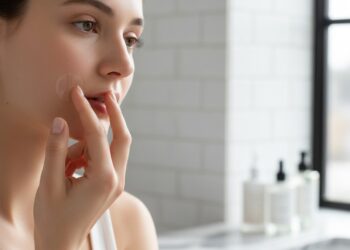In a world that often feels like a whirlwind of responsibilities and stress, it’s no surprise that many individuals grapple with anxiety and depression. These mental health challenges can cast a shadow over daily life, affecting not only one’s emotional well-being but also physical health. While traditional treatments like therapy and medication are essential, there’s an additional avenue worth exploring: the healing touch of massage therapy.
In this blog post, we’ll explore how Massage Me can help you de-stress and provide tips and techniques for maximum relaxation.
Understanding Anxiety and Depression
Before we explore the benefits of massage, it’s crucial to understand the profound impact of anxiety and depression on individuals.
- Anxiety is characterized by persistent feelings of worry, fear, and unease. Physical symptoms often accompany these emotions, including muscle tension, rapid heart rate, and shallow breathing.
- Depression, on the other hand, is marked by profound sadness, a loss of interest in previously enjoyed activities, and a sense of hopelessness. Physical symptoms may include fatigue, changes in appetite, and difficulty concentrating.
Both conditions can lead to physical ailments, such as headaches, digestive issues, and chronic pain. They also disrupt sleep patterns, affecting overall health and exacerbating emotional distress.
The Science of Massage Therapy
Massage therapy is more than just a luxurious spa treatment; it’s a holistic approach to well-being. Numerous studies have demonstrated the physiological and psychological benefits of massage:
- Reduction in Stress Hormones: Massage has been shown to decrease the production of stress hormones, like cortisol, while increasing the release of feel-good hormones, such as serotonin and dopamine. This hormonal shift leads to a sense of relaxation and improved mood.
- Muscle Relaxation: The physical manipulation of muscles and soft tissues during a massage helps to release built-up tension. This can alleviate physical symptoms of anxiety, such as muscle tightness and pain.
- Improved Sleep Quality: Stress often disrupts sleep patterns. Regular massage can help improve sleep quality by promoting relaxation and reducing anxiety.
- Enhanced Blood Circulation: The kneading and manipulation of muscles during a massage can improve blood circulation. This promotes the delivery of oxygen and nutrients to the body’s cells, contributing to an overall sense of well-being.
- Mind-Body Connection: Massage offers a unique opportunity to connect with your body and focus on the present moment, a technique often used in mindfulness and cognitive-behavioral therapies to reduce anxiety and depression.
The Benefits of Massage for Anxiety and Depression
- Immediate Relief: A well-executed massage session can provide immediate relief from the physical symptoms of anxiety, such as muscle tension and racing thoughts.
- Long-Term Effects: Regular massage therapy sessions can help manage and reduce the chronic symptoms of anxiety and depression. Consistency is key to experiencing the full benefits.
- Reduced Medication Dependency: For some individuals, regular massage may reduce their reliance on medication, complementing other forms of treatment.
- Enhanced Self-Care: The act of taking time for oneself and investing in self-care can be empowering. It sends a message that one’s well-being is a priority.
Choosing the Right Massage Technique
There are various massage techniques to consider when seeking relief from anxiety and depression:
- Swedish Massage: Known for its gentle and soothing strokes, Swedish massage is an excellent option for relaxation.
- Deep Tissue Massage: If your anxiety or depression has led to muscle tension and pain, deep tissue massage can target those areas.
- Aromatherapy Massage: The use of essential oils in massage, combined with aromatherapy, can further promote relaxation and emotional balance.
- Hot Stone Massage: Heated stones are used to relax muscles and provide a sense of comfort and warmth.
- Shiatsu Massage: This Japanese technique uses finger pressure and stretching to balance the body’s energy and reduce stress.


 Home
Home









